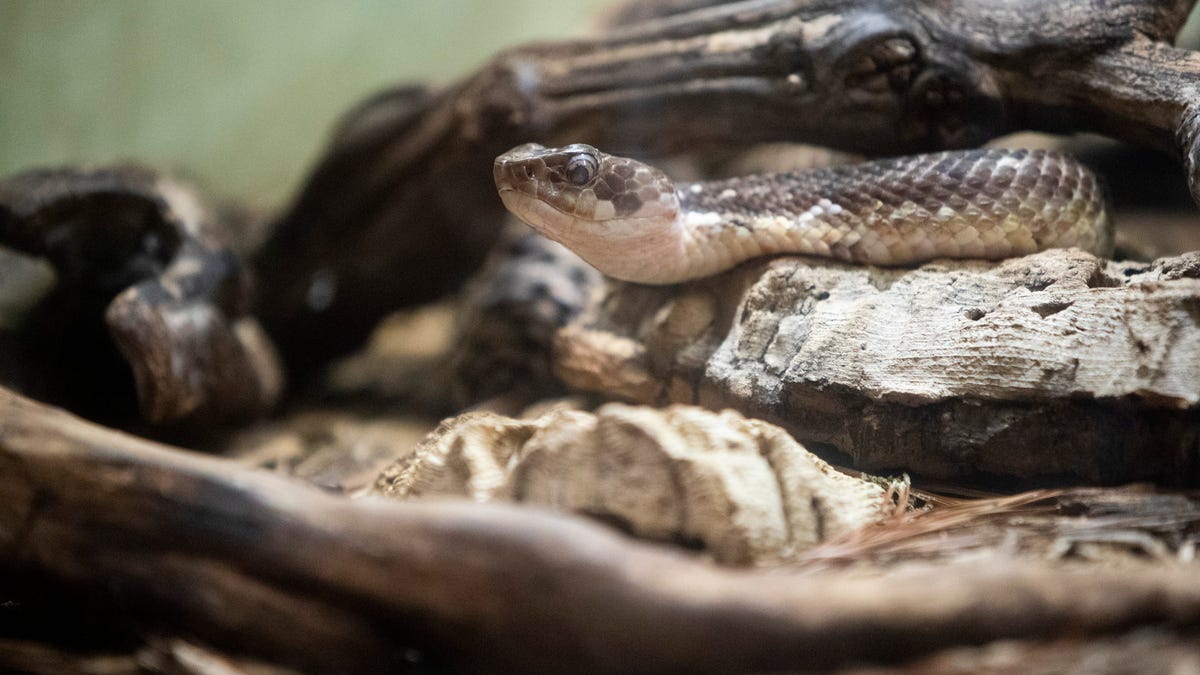
Easy ways to identify snakes
Depending on where you are, snakes are inevitable. Here’s how to identify if the snake is venomous or not.
Summer vacation typically involves plans of camping, hiking, tubing and more, meaning some Illinois residents may come face-to-face with creatures they’re not used to – such as snakes.
Though your instinct may be to fear them, very few of the state’s native species are harmful, according to the Illinois Department of Natural Resources. You just need to know how to correctly interact with and identify them while in their home territory.
Here’s a look at what snakes you might find around Illinois and what to do if you spot them.
Are there venomous snakes in Illinois?
Only four of Illinois’ 40 native snake species are venomous, according to the IDNR. Here’s what to look out for:
Eastern Copperhead: Found throughout southern Illinois. Average length of 24 to 36 inches with a flattened head wider than its neck and ridged scales. The snake has a copper-red head, red-brown or yellow-brown body and hour-glass markings across the back when viewed from above. They prefer forests and river bluffs.Timber Rattlesnake: Found mostly in southern and western regions of Illinois. Average length of 36-60 inches in length. A flat head much wider than the neck with a rattle at the tip of its tail and ridged scales. The body is gray, yellow or green-white with a series of dark bands along the back and a rust-colored stripe in the middle of the back. A dark bar may be found between the eye and jaw.Northern Cottonmouth: Found in swamps and wetlands in the southern tip of Illinois. Averages 30-42 inches in length with a flat head much wider than its neck. Ridged scales with plain black or brown coloring and little evidence of a pattern. Some have dim crossbands across the back.Eastern Massasauga: Found in prairie wetlands and river flood plains in the Chicago metro area, as well as parts of central Illinois. Average length of 18-30 inches with flat head much wider than its neck and ridged scales. The snake has a rattle at the tip of its tail, a row of dark blotches down its back and three rows of dark spots on the sides. The body is gray.Non-venomous snake species found in Illinois
Here’s a list of the remaining nonvenomous snake species found in Illinois:
ScarletsnakeNorth American RacerCoachwhipPrairie KingsnakeEastern KingsnakeMilksnakeRough GreensnakeSmooth GreensnakeGreat Plains RatsnakeWestern FoxsnakeGray RatsnakeEastern FoxsnakeGophersnakeFlat-Headed SnakeCommon WormsnakeWestern WormsnakeRing-Necked SnakeRed-Bellied MudsnakeWestern Hog-Nosed SnakeEastern Hog-Nosed SnakeKirtland’s SnakeMississippi Green WatersnakePlain-Bellied WatersnakeSouthern WatersnakeDiamond-Backed WatersnakeCommon WatersnakeGraham’s Crayfish SnakeQueensnakeDeKay’s BrownsnakeRed-Bellied SnakeWestern RibbonsnakePlains GartersnakeEastern RibbonsnakeCommon GartersnakeLined SnakeSmooth EarthsnakeWhat to do if you see a snake
The Illinois Poison Center and IDNR recommend avoiding the following actions if you find yourself in areas with snakes:
Intentionally handling a snakeAttempting to trap or feed a wild snakeTouching a snake that appears dead (freshly killed snakes can bite)Stepping on a snake in the wildReaching under or stepping over rocks or logs (look around before sitting)
The two organizations recommend wearing leather boots in areas known to house venomous snakes.
What to do if a snake bites you
The IPC recommends the following actions if you are bitten by a snake:
Immobilize the affected limb.Remove any jewelry such as rings, bracelets and watches.Do not apply ice or heat, tight tourniquet, electric shocks, conduct oral suctioning or make incisions to the bite area.Go to the nearest emergency department immediately.You can speak to toxicology experts through the IPC’s helpline 24/7 at 1-800-222-1222.Snakebite symptoms
Here’s a list of venomous snakebite symptoms, according to the IPC:
Rapid progressive swellingSevere painRedness on skinBroken blood vessel or bruised appearanceLarge blistersBleedingTissue ulcerationTingling of the mouth, hands and feetDrop in blood pressure or shockRespiratory failureWeakness and sweatingNausea and vomitingAre venomous snake bites deadly?
Venomous snake bites are usually not deadly, but are painful and can cause swelling, nausea and the risk of infection, according to the IDNR. If you are bitten, go to a hospital for treatment immediately.
Jenny Porter Tilley contributed to this article.

